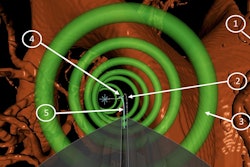
Getty Images
Mind-reading technology is still in its infancy, and existing techniques rely on the implantation of electrodes deep in peoples’ brains, which isn’t ideal. According to a recent Science Alert article, there is now a noninvasive method that works just as well and stands to change the way we explore human thought. The strategy employs a brain scanning technique called functional magnetic resonance, or fMRI. Active brain cells require more energy and oxygen, and fMRI tracks the flow of oxygenated blood through the brain. Thus, it can be used for an indirect measure of brain activity.





















